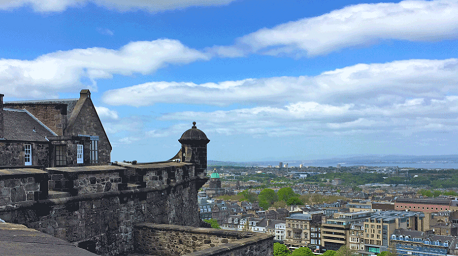
by Dawnielle Jacobson | Jun 24, 2018 | news
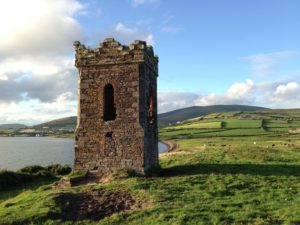 Big Savings on Upcoming Tours
Big Savings on Upcoming Tours
If your schedule is flexible, join us on an upcoming tour and take advantage of big savings.
TASTE O’IRELAND, August 19-28 $500 discount – 4 seats remaining
THE BEST OF SCOTLAND & WALES, Sept 4-13 $400 discount – 4 seats remaining
THE BEST OF ITALY, Sept 16-29 $500 discount – 4 seats remaining
THE BEST OF ITALY, October 14-27 $500 discounted – 3 seats remaining
BATTLEFIELDS OF FRANCE & BELGIUM, October 16-26 $500 discount – 4 seats remaining
For more information about the tours on sale, click here.
Your Adventure Starts Here!


by Dawnielle Jacobson | Jun 8, 2018 | news
Brunello di Montalcino
Of all the DOCG wines produced in Tuscany, my favorite is Brunello di Montalcino. Like the other Tuscan wines I’ve discussed in previous articles, this too is Sangiovese-based and produced under strict local and state regulations. The town of Montalcino is about 25 miles south of Siena nestled among rolling hills, wheat fields and of course, vineyards galore! “Brunello” is the local name for the Sangiovese grape grown in this region.

These grapes are grown under an age-old process that involves excessive pruning to ensure low yield per hectare (10,00 square meters or 2.47 acres). The old adage citing quality above quantity is surely the rule here in these vineyards. Only wine produced in the Montalcino region can be called “Brunello.” The combination of soil, climate and vintner knowledge and experience has made this wine world famous. It is thought the word “Brunello” is derived from the root word “Bruno”, which means “brown.” For many years experts thought that the Brunello grape was a unique variety; however, in 1879 a group of experts pretty much agreed that the grape was actually Sangiovese. Since that time, 100% Sangiovese wines produced in Montalcino have been called Brunello.
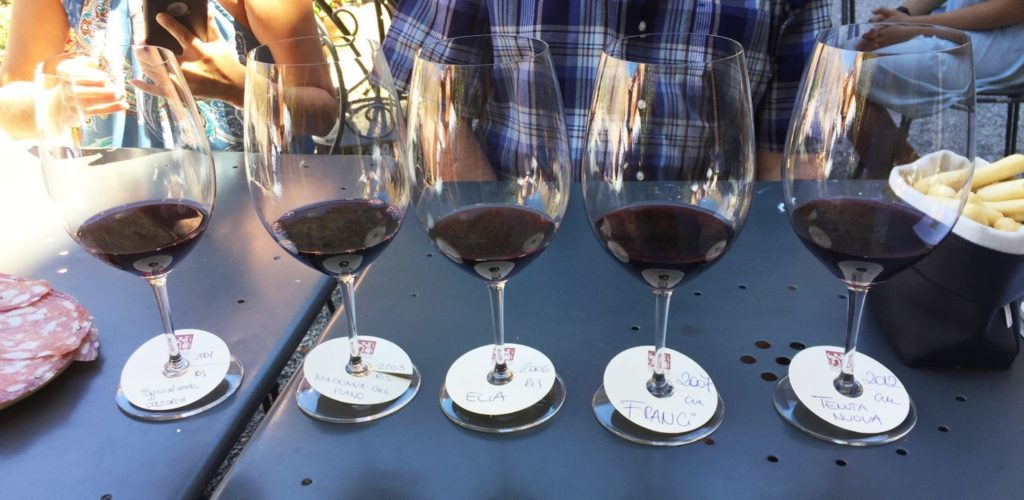
Brunello di Montalcino is made from 100% Sangiovese grapes that have gone through an extended period of maceration to allow flavors and colors to be extracted from the skins. The resulting juice is placed in aged oak casks for fermentation for at least two years. After two years, the wine can remain in the barrel or be bottled. It must also remain in the bottle for a minimum amount of time. Regardless of the bottling, the wine must be held a minimum of five years from the time of harvest. Brunello di Montalcino “Riserva” must be held a minimum of six years before release, including at least six months in the bottle. Exceptional vintage years include those produced from harvests in 2015, 2012, 2006, 2004, 2001, and 1997.
Brunello di Montalcino’s long aging process makes for excellent body and intense ruby and garnet colors. It possesses complex aromas consisting of wild berries, leather, vanilla and wood/oak. This one goes well with fatty cold cuts such as salami and sausage, steak, red meat, and wild boar, as well as hearty ground meat tomato-based pastas. This is not a wine to sit around and sip on a hot summer afternoon! To fully appreciate it, you need to consume it with food. Be sure it is served at cellar temperature (64-68 degrees F) and has had some time to breathe after being uncorked.
Rosso di Montalcino is also a quality wine with DOC status. Produced from the same Brunello grape, it must be aged at least one year with no oak barrel requirements. Some people refer to this as “Baby Brunello”, however, I tend to think of it as an economical alternative to the more expensive Brunello.
[divider scroll_text=””]
Tours to Italy
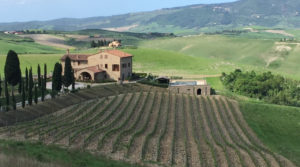
Interested in sampling a local Brunello? Join us on one of our upcoming tours.
Essence of Italy – A 9-day tour with stops in Rome, the Cinque Terre, Pisa, Volterra, Siena and Florence.
Tour dates:
2018: September 16-24, October 14-22.
2019: April 7-15, May 5-13, June 30-July 8, September 22-30
Best of Italy – A 13-day tour. All the destinations of the Essence of Italy, plus Venice, Lake Como and Milan.
Tour dates:
2018: September 16-29, October 14-27.
2019: April 7-20, May 5-18, June 30-July 13, September 22-October 5
Tuscany Villa Vacation – Enjoy a relaxing stay in a Tuscan villa with day trips to Volterra, Siena, San Gimignano and Lucca. Begin and end your tour in Florence.
Tour dates:
2019: May 24-June 2, September 13-22
Your Adventure Starts Here!


by Dawnielle Jacobson | Jun 1, 2018 | news
Nobile di Montepulciano

Photo credit: Consorzio Vino Nobile di Montepulciano
Nobile di Montepulciano is one of Tuscany’s oldest and most renowned wines. It is made from Sangiovese grapes grown around the town of Montepulciano in Southeastern Tuscany. Locally, the Sangiovese grape is known as Prugnolo Gentile, but it is still just the Sangiovese grape grown in the soil surrounding Montepulciano. Sangiovese has to make up at least 70% of the wine. The remaining 30% can only be made with other grape varieties grown in Tuscany. Typically, the main varieties will be Canaiolo, Colorino, Mammolo, and sometimes, depending on the vintner, international grape varieties such as Merlot and Cabernet Sauvignon.
There are four varieties of wine produced around Montepulciano.
- Nobile di Montepulciano (commonly known as Vino Nobile di Montepulciano). This wine must be blended as mentioned above and aged for a minimum of two years before being distributed.
- Nobile di Montepulciano Riserva must follow the same rules but must be aged for a minimum of three years.
- Rosso di Montepulciano is a younger, fruitier wine still made with the same grapes but with no aging requirements.
- Vin Santo is a sweet wine meant for sipping as a digestivo or for dipping cantucci or biscotti cookies. The grapes for Vin Santo are picked and then hung out to dry to produce a concentrated grape juice that is sweet and syrupy. Here, too, there are various levels of Vin Santo di Montepulciano. The first is made with Malvasia and Grechetto grape varieties that are aged a minimum of three years. Vin Santo di Montepulciano Riserva is made with the same grape varieties and is aged for a minimum of five years in oak barrels. Occhio di Pernicce Vin Santo di Montepulciano must be made with at least 50% Sangiovese grapes, with the remaining 50% coming from other regional grape varieties. Occhio di Pernicce must be aged for six years in oak barrels. These wines are only produced as red wine Vin Santo.
The typical Nobile di Montepulciano is usually high in acidity and tannin. As they are aged in oak barrels, these wines are often more elegant and classy with a velvety finish. Because of the high acidity and tannins, these wines pair well with tomato-based sauces, fatty cold cuts such as salami and prosciutto, and Tuscan specialties like wild boar ragu and beefsteak Fiorentina.
Top Producers

The top producers in the area are:
Avignonesi – producing superb Vino Nobile di Montepulciano, Rosso di Montepulciano and Vin Santo. If you can get your hands on it, try their “Grandi Annate” and Occhio di Pernice Vin Santo, which are fantastic.
Poliziano – the Nobile wines from this estate are great, but “Asinone” really stands out as a fantastic wine.
Corte alla Flora – try their Riserva for a special, more refined blend.
Boscarelli – for a splurge, try “Il Nocio”.
La Braccesca – this is a part of the Antinori family holdings, and any wine from this estate is top notch.
Many agree the best vintages are:
- 1980s: ’85, ’88
- 1990s: ’95, ’97, ’99
- 2000s: ’05, ’06, ’07
- 2010s: ’10, ’12

Visit intovino.com to see the full chart and learn more about Vino Nobile.
Not to be confused with…
One Final note. There is another wine with a similar name that is often confused with Nobile di Montepulciano. Montepulciano d’Abruzzo is a red wine made from the Montepulciano grape, which is grown in the region of Abruzzo in the east-central part of Italy. This wine is good and easy drinking but far inferior to Nobile. In the past 20 years it has gained a reputation as one of the most widely exported DOC wines from Italy.
[divider scroll_text=””]
Tours to Italy

Interested in sampling a local Nobile? Join us on one of our upcoming tours.
Essence of Italy – A 9-day tour with stops in Rome, the Cinque Terre, Pisa, Volterra, Siena and Florence.
Tour dates:
2018: June 24-July 2, September 16-24, October 14-22.
2019: April 7-15, May 5-13, June 30-July 8, September 22-30
Best of Italy – A 13-day tour. All the destinations of the Essence of Italy, plus Venice, Lake Como and Milan.
Tour dates:
2018: June 24-July 7, September 16-29, October 14-27.
2019: April 7-20, May 5-18, June 30-July 13, September 22-October 5
Tuscany Villa Vacation – Enjoy a relaxing stay in a Tuscan villa with day trips to Volterra, Siena, San Gimignano and Lucca. Begin and end your tour in Florence.
Tour dates:
2019: May 24-June 2, September 13-22
Your Adventure Starts Here!

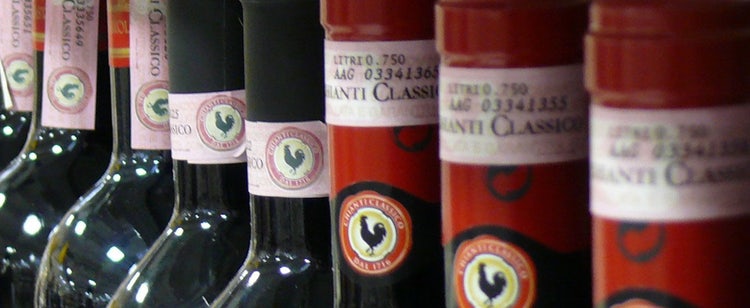
by Dawnielle Jacobson | May 4, 2018 | news
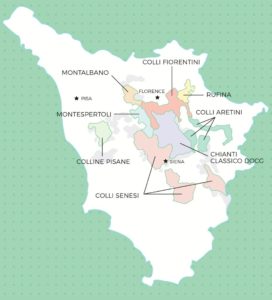 Chianti
Chianti
A few decades ago, Chianti was the most recognizable Italian red wine in the United States. When I was young, I recall visiting Italian restaurants decorated with red-checkered tablecloths and pear-shaped, straw-covered wine bottles holding half-burnt candles. Those straw-covered wine bottles (called a fiasco in Italian) once contained an inexpensive DOC wine from the Chianti region of Tuscany.
Chianti wine is composed mostly of Sangiovese grapes that must be harvested in Tuscany in a region around Florence (See map). For a wine to be a called Chianti, it must be produced in the Chianti region and be made of at least 80% Sangiovese grapes. While many less-expensive Chianti wines are composed of 100% Sangiovese, some winemakers blend the Sangiovese with a mixture (up to 20%) of other grape varieties such as Cabernet, Merlot or Syrah to even out the acidity, tannins and textures of the finished wine. Regardless of the “mix”, it is a rustic wine with high tannins and high acidity. Because of these characteristics, Chianti is not a wine that you would sip while sitting around and chatting with your friends. To really appreciate any Chianti wine, you must drink it with fatty foods such as salami, prosciutto, T-bone steak and such.
In case you forgot, DOC stands for Denominazione di Origine Controllata (Denomination of Controlled Origin). The DOC designation for wines was introduced in the early 1960s. The regulations for each DOC wine delimit the production area, wine color, permitted grape varieties and proportions, styles of wine, minimum and maximum alcohol levels, as well as permitted or mandated viticultural, vinification and maturation techniques.
You’ll notice on the map there is a region (noted in blue) named Chianti Classico DOCG. This is generally thought of as the oldest, original Chianti region. The Chianti Classico region contains 12 villages in the province of Florence and two regions in the province of Siena. Wine has been produced here since Etruscan times, more than 2000 years ago. In 1716, Gran Duke Cosimo de’ Medici III recognized and named this region Chianti. The black rooster seal was conceived in 1924 as a means to protect and promote this wine region and to prevent wine fraud.
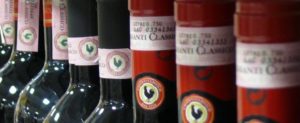
In order for a wine to be classified as Chianti Classico, 80% of the Sangiovese grapes must come from the Chianti Classico DOCG region. Vintners may, if they choose, blend in up to 20% of other grape varieties such as Canaiolo and Colorino, as well as other international varieties such as Cabernet Sauvignon and Merlot. The wine must be aged at least one year and contain 12% alcohol.
The best Sangiovese grapes from the region are held in reserve to produce Chianti Classico Reserva. Riserva must contain at least 80% Sangiovese from the region and be aged a minimum of 24 months, of which the last three must be in the bottle. The alcohol content must be at least 12.5%.
In 2014, a new category known as Chianti Classico Gran Selezione was introduced. Gran Selezione is made exclusively from a winery’s own Sangiovese grapes that are grown according to stricter regulations. The Gran Selezione designation is granted after the wine passes an authorized laboratory test and is approved by a special tasting committee.
Chianti Rooster Logo
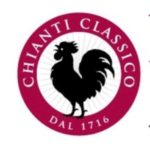
New Chianti Logo

Old Chianti Logo
In February 2013, the Black rooster associated with the Chianti Classico got a facelift. The chest is bigger and rounder, the tail feathers look fluffier, and there is a new angle of the beak. According the Chianti Classico consortium, this new design shows “a greater sense of energy, strength and pride. The new rooster looks prouder and is perhaps a slightly more ‘macho’ rooster than before”.
[divider scroll_text=””]
The Legend of the Black Rooster of Chianti
In the Middle Ages, Florence and Siena were always at war, fighting for precious land. One day the rulers of each city met and decided to declare a truce. However, there was still the matter of determining the cities’ borders. It was decided that there would be a competition between two knights, one from each city. Each knight would leave his city’s center on horseback at sunrise, when the first rooster crowed, and the official border would be determined at the point where the two knights met.
The Sienese chose a white rooster and fattened him up for weeks before the competition. The Florentines chose a black rooster and put him in a dark box without any food for many days.
On competition day, the light-deprived, hungry black rooster in Florence was set free at midnight – and it immediately crowed. So, off went the Florentine knight on his horse heading south toward Siena. The fat white rooster of Siena crowed at daybreak and the knight from Siena began to head north by horseback. As you can imagine, the Florentine knight traveled much further than the knight from Siena. In fact, the two met 7 miles north of Siena (25 miles south of Florence) near Fonterutoli, in Castellina.
[divider scroll_text=””]
Tours to Italy

Interested in sampling a local Chianti? Join us on one of our upcoming tours.
Essence of Italy – A 9-day tour with stops in Rome, the Cinque Terre, Pisa, Volterra, Siena and Florence.
Tour dates:
2018: June24-July 2, September 16-24, October 14-22.
2019: April 7-15, May 5-13, June 30-July 8, September 22-30
Best of Italy – A 13-day tour. All the destinations of the Essence of Italy, plus Venice, Lake Como and Milan.
Tour dates:
2018: June24-July 7, September 16-29, October 14-27.
2019: April 7-20, May 5-18, June 30-July 13, September 22-October 5
Tuscany Villa Vacation – Enjoy a relaxing stay in a Tuscan villa with day trips to Volterra, Siena, San Gimignano and Lucca. Begin and end your tour in Florence.
Tour dates:
2019: May 24-June 2, September 13-22
Your Adventure Starts Here!


by Dawnielle Jacobson | Apr 20, 2018 | news
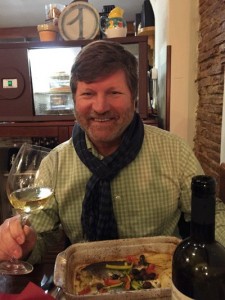 Wines of Tuscany
Wines of Tuscany
Italy is synonymous with its amazing food and wines, and Tuscany is the heart and soul of Italian gastronomy. Nothing compares to savoring fresh pasta and sipping local wine on a piazza as you watch the people go by. Eating (and drinking) well is a priority on my tours, so you’ll get your fair share of fine food sourced locally and prepared by excellent chefs.
We will be featuring a different Tuscan wine in each newsletter for the next few months, from classics like Chianti to the evolving super Tuscans and local vineyards. Let’s begin with an introduction to the region.
Grapes were cultivated by the Etruscans as early as 3,000 years ago. They grew so well that they quickly became a reliable cash crop and were often sold overseas. 80% of Tuscan wines are made with red grapes, and most of those use the Sangiovese grape. These grapes can range in flavor and are high in acid and tannin, which makes them very versatile for winemakers.
Reading the labels
You’ll notice different classification codes on bottles of Italian wine. In 1963, a group of Italian winemakers got together to find a way to raise the quality standards for Italian wines and classify regional wines according to local wine-making traditions. Their goal was to provide a way to gauge the quality of a wine and determine if it was made in a consistent style and quality. There are four wine rankings.
DOC stands for Denominazione di Origine Controllata (Denomination of Controlled Origin). The DOC designation for wines was introduced in the early 1960s. The regulations for each DOC wine delimit the production area, wine color, permitted grape varieties and proportions, styles of wine, minimum and maximum alcohol levels, as well as permitted or mandated viticultural, vinification and maturation techniques.
DOCG stands for Denominazione di Origine Controllata e Garantita (Denomination of Controlled and Guaranteed Origin). The DOCG wine designation was created in 1980 to differentiate the top Italian wines. The regulations are tighter and more restrictive. For example, most DOCG rules reduce the allowable yield of grapes to produce the wine and require longer aging periods. Most importantly, a DOCG wine has to pass an analysis and a tasting by government-licensed personnel before being bottled.
IGT stands for Indicazione Geografica Tipica. An IGT-classed wine is “typical” of a particular geography or local region. Most IGT wines are simple, made from grapes grown locally and intended to be consumed young. The big exception to this is the super Tuscan wines, which can’t be given a higher classification because they often blend non-indigenous grapes (Learn more about super Tuscans in a future newsletter).
VdT stands for Vino da Tavola, or Table Wine. Wines marked with a VdT on the label tells you they’re made in Italy, and that’s about it. These wines are basic, local table wines – cheap, but pretty simple. You find these mostly in local trattorias and osterias in Italy.
[divider scroll_text=””]
Tours to Italy

Interested in sampling some of these local wines in situ? Join us on one of our upcoming tours.
Essence of Italy – A 9-day tour with stops in Rome, the Cinque Terre, Pisa, Volterra, Siena and Florence.
Tour dates:
2018: June24-July 2, September 16-24, October 14-22.
2019: April 7-15, May 5-13, June 30-July 8, September 22-30
Best of Italy – A 13-day tour. All the destinations of the Essence of Italy, plus Venice, Lake Como and Milan.
Tour dates:
2018: June24-July 7, September 16-29, October 14-27.
2019: April 7-20, May 5-18, June 30-July 13, September 22-October 5
Tuscany Villa Vacation – Enjoy a relaxing stay in a Tuscan villa with day trips to Volterra, Siena, San Gimignano and Lucca. Begin and end your tour in Florence.
Tour dates:
2019: May 24-June 2, September 13-22
Your Adventure Starts Here!


 Big Savings on Upcoming Tours
Big Savings on Upcoming Tours
















